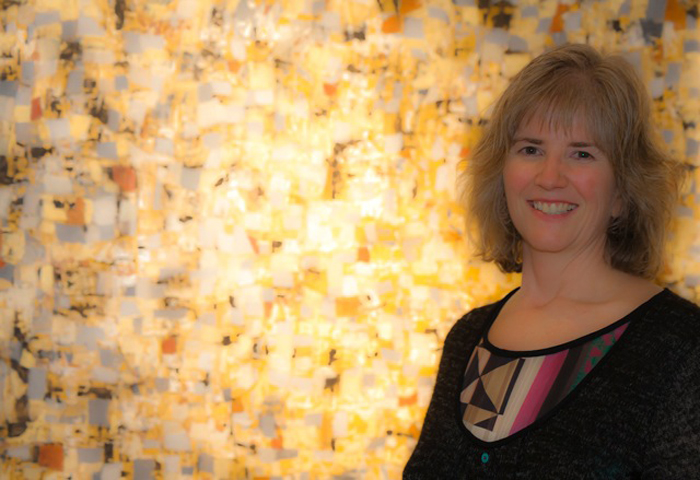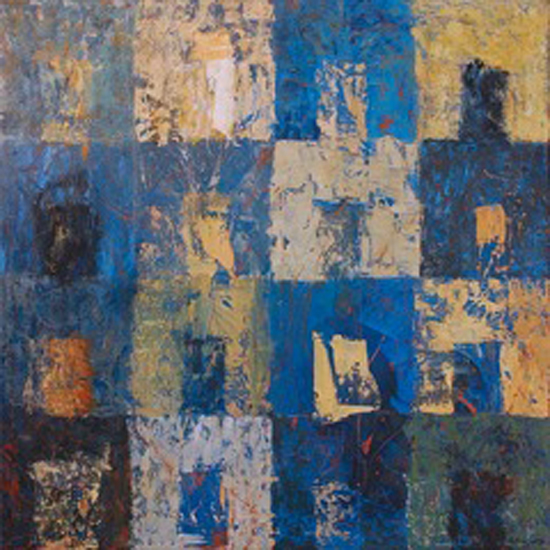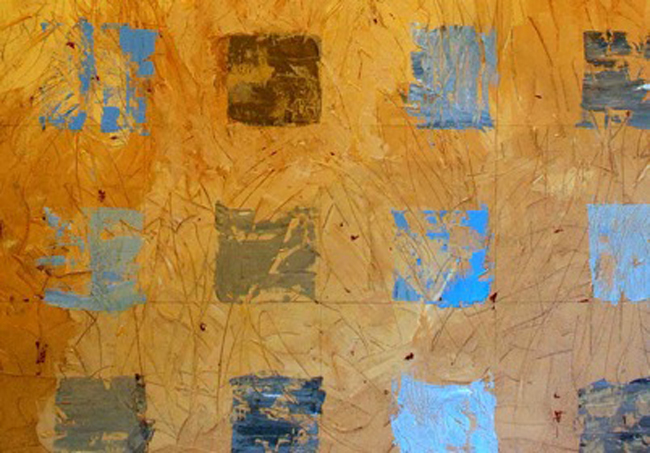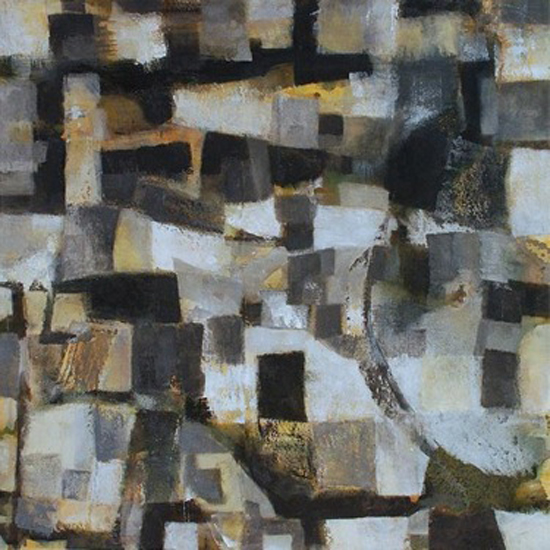Interview with artist Robin Kingsburgh (R.K) by Tara Akitt (T.A)
 Robin Kingsburgh with Emergent Rhythms Ochre
Robin Kingsburgh with Emergent Rhythms Ochre
Robin Kingsburgh’s latest solo exhibition Square Derivatives (April 3-14, 2013 at Propeller Centre for Visual Arts) featured the artist’s exploration of order and chaos. Kingsburgh approachs art from a background in the sciences. This is evident in her paintings as she struggles to depict the balance between exact mathematical form and the imprefection that arises when these forms are articulated by the human hand. Her movement though mathematical forms metaphorically represents the passage through grief ( her husband passed away in 2007), as one finds new points of stability, points of reference, and growth.
 Robin Kingsburgh, Passages, 2012
Robin Kingsburgh, Passages, 2012
T.A: The show is named after the piece Square Derivatives that you produced in 2011. Can you comment on why this work was chosen as the centre piece for your exhibition?
R.K: This piece was an important transition point for me. It contains some structural rigidity of form, but the squares start to break free from their boundaries. From that point, instead of imposing formal structural forms on my paintings, I allowed geometrical structures to emerge from the underlying gestures. Squares began to slip in to each other and the harder edge boundaries start to dissipate. A derivative is a mathematical term that measures ‘how a function changes as its input changes’. I think as human beings we are constantly evolving and changing as we come to greater self awareness along our journey. In works following this painting, the movement away from imposing structural forms was coupled with a stronger intuitive approach where the physicality of the body in the mark-making approach and the visceral quality of the paint was embraced to a much greater degree.
 Robin Kingsburgh, Detail of Square Derivatives, 2012
Robin Kingsburgh, Detail of Square Derivatives, 2012
T.A: There are several series within this exhibition that use similar colour schemes. What is the significance of reworking these particular colours in these geometric forms?
R.K: Sometimes I have a strong feeling about a particular colour, and that can become a predominant feature in a painting. Other times the colour suggests itself, or becomes a response to, what is present already. I have worked over the past few years with more monochromatic or even achromatic palettes, and I think the focus becomes more on the mark-making process which engages me (and the viewer) in a different way, compared to more saturated colour palettes, which I embraced in the past. So I don’t think I can answer why I use similar palettes with different geometric constructs, as each painting has its own expression of colour and gesture, which emerges in a way that makes sense at that moment.
 Robin Kingsburgh, Emergent Grid Black and White, 2012
Robin Kingsburgh, Emergent Grid Black and White, 2012
T.A: How do you navigate these larger issues of the universal nature of chaos and order in relation to your personal experience of physically painting these forms?
R.K: For me the physicality of the body is an essential part of painting. I have practised a lot of yoga, and feel a strong sense of ancient knowledge present in our bodies. The mark-making gestures the body makes, and the visceral quality of paint are integral components that can define key moments in the creation of a work. I think the body itself, and the mind and body together, form a microcosm, which mirror the macrocosm of the greater Universe. I am interested in the structural qualities of the Universe: how similar structures repeat themselves at all levels of scale, and how structure can emerge from chaos and chaos from structure at any moment. For me that mirrors the human psyche, which I think is inherently chaotic, with our fears and pain and chaotic irrationalities. We exist in a world of relationships, which help us navigate and give structure to the chaos. I try to create relationships on the canvas, where individual pictorial elements may be chaotic, but exist within a structure that finds the still point. My favorite T.S. Eliot quote: “At the still point of the turning world… there would be no dance, and there is only the dance.”
Tara Akitt
Photo: Tony Saad

The works really resonate with me, makes me think about how we try to be organized in such disorganized and sometimes dysfunctional world. Squares that dissipate into each other… …
Sooo interesting!